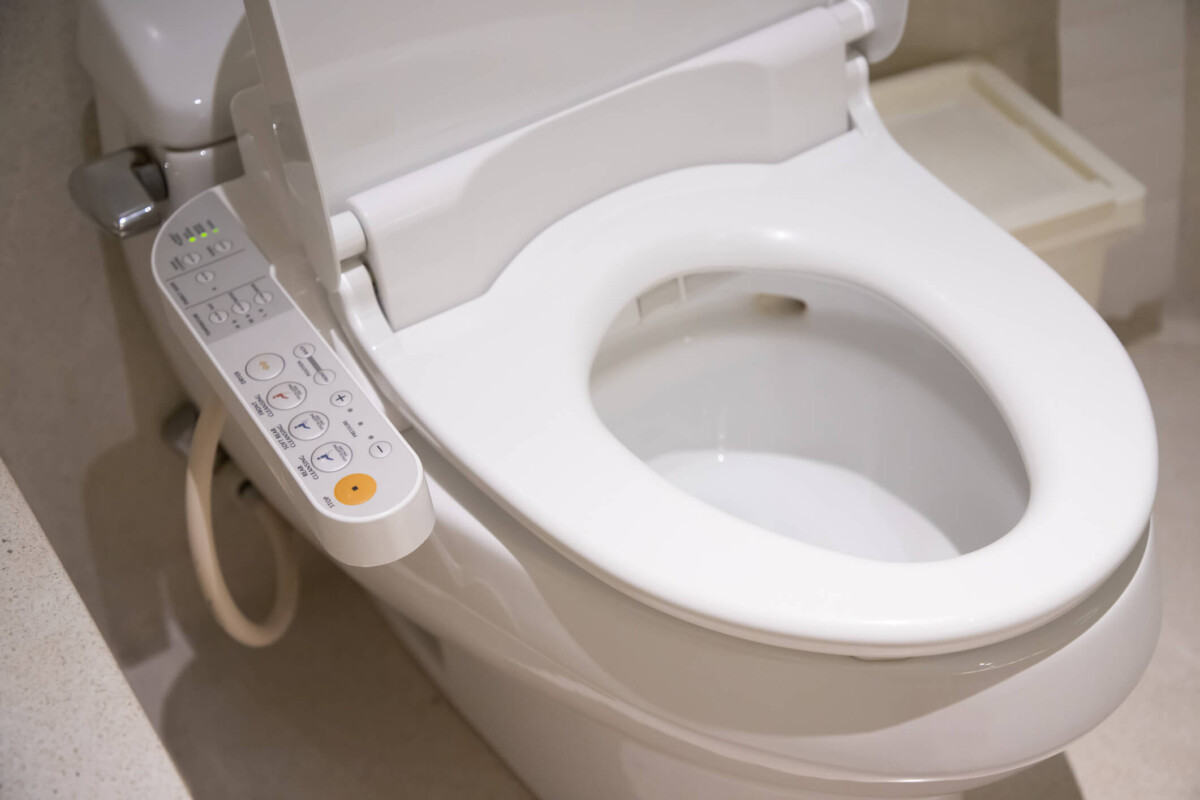
As we age, our homes should adapt to meet our evolving mobility needs, especially in the bathroom.
Daily hygiene routines, such as showering or personal grooming, can become precarious, with slips and falls being unfortunately all too common. For elderly individuals or those with limited mobility, everyday tasks like using the toilet can become difficult or even dangerous. It’s thought that millions of older adults need these kinds of bathroom modifications to continue living comfortably.
That’s where a high toilet for elderly users – also known as a raised toilet, elevated toilet, or high toilet seat – can make a world of difference. In this guide, we’ll break down everything you need to know about high toilets, from their multiple benefits to choosing the right one for you.
What Is a High Toilet?
A high toilet is designed to sit higher off the ground than a standard toilet. While typical toilet seats are about 14–15 inches from the floor, elevated toilets usually measure between 17–19 inches, often referred to as “comfort height” or “right height” toilets.
Alternatively, a raised toilet seat is an attachment that fits on top of an existing toilet to increase the seat height without the need to replace the entire toilet.
These options are especially useful for individuals who find it challenging to bend, sit, or rise due to joint pain, muscle weakness, or mobility impairments.
What Are the Benefits of a High Toilet?
A high toilet or raised toilet seat can improve both safety and independence. Here’s how:
Increased Stability and Safety
The added height reduces the distance a user needs to bend or rise, significantly lowering the risk of falls. When paired with grab rails or a support frame, a high toilet offers excellent stability, especially for people with balance issues or muscle weakness.
Reduced Joint Strain
Bending down to use a standard toilet can strain the knees, hips, and back, particularly for those with arthritis or other joint conditions. A raised toilet minimises this strain, making sitting and standing smoother and less painful.
Improved Independence
A high toilet for elderly individuals supports unassisted use, which boosts confidence, dignity, and overall well-being. They work brilliantly alongside walk-in showers and walk-in baths.
Comfort for Carers
A recent study found that carers experienced a 42% reduction in required care when their clients’ bathrooms were adequately modified. If a carer is required to assist with bathroom tasks, reducing the amount of lifting or support required can prevent the risk of injury for both parties. A high toilet seat creates a safer environment for caregivers, too!
Easy to Install and Maintain
Many raised toilet seats are easy to fit with secure, adjustable brackets. They are just as easy to remove and clean, offering a simple, affordable upgrade with maximum impact.
Request a Free Brochure
Simply fill out a quick form and see how we can transform the way you bathe.
What Is the Ideal Toilet Height for the Elderly?
For most elderly users, a toilet height of 17 to 19 inches from the floor to the top of the seat is ideal. This height allows for easier transfers, particularly for those using mobility aids like walkers or wheelchairs.
However, the ideal height can vary depending on the user’s stature and physical condition. It’s important to measure the user’s leg length and current toilet height to determine the best fit.
Who Should Use Raised Toilets?
Raised toilets are beneficial for:
- Elderly individuals, especially those prone to falls
- People recovering from hip, knee or back surgery
- Individuals with arthritis or other joint conditions
- Anyone experiencing reduced strength, flexibility or balance
- Taller individuals who find standard toilets uncomfortably low
Whether you’re a senior living independently or a caregiver supporting a loved one, installing an elevated toilet can significantly enhance safety and comfort. They provide multiple benefits whilst having a minimal impact on bathroom design.

How to Choose a High Toilet
When choosing a high toilet seat or raised toilet, consider the following factors:
Height
Raised seats come in various heights (2–6 inches). Measure your current toilet and determine how much extra height you need for a comfortable sitting and standing position.
Weight Capacity
Check the weight limit of the seat or toilet. Most models support a wide range, but it’s crucial to choose one suited to the user’s needs for both comfort and safety.
Design & Features
- With or without a lid: Some raised seats include lids for a discreet, polished look.
- Padded vs. hard plastic: For extra comfort, especially during longer use.
- Handles or armrests: These add extra support and stability.
- Permanent vs. temporary: Choose a built-in high toilet for long-term use, or a removable raised seat for flexibility.
Compatibility
Make sure the seat fits the existing toilet bowl shape (round or elongated). Some seats are universal, but others are designed for specific models.
A high toilet seat may seem like a minor upgrade, but it can be life-changing for those with limited mobility. Whether you opt for a raised toilet seat attachment or a fully installed elevated toilet, the benefits in terms of safety, independence and comfort are substantial.
If you’re updating your bathroom with other accessible features like a walk-in bath or shower, don’t overlook the importance of toilet height. It’s a simple adjustment that supports dignity, confidence, and a safer home environment.
Ready to create a bespoke disabled bathroom? Discover our range of solutions to help support you.
